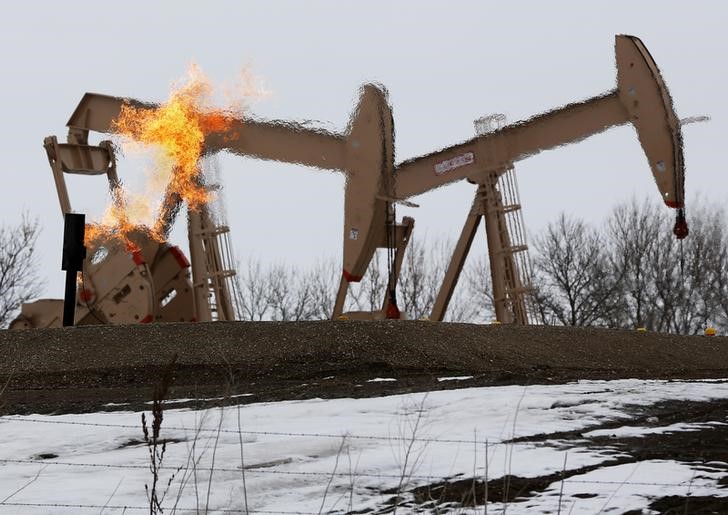
© Reuters.
LCO
-0.21%
Add to/Remove from Watchlist
Add to Watchlist
Add Position
Position added successfully to:
Please name your holdings portfolio
Type:
BUY
SELL
Date:
Amount:
Price
Point Value:
Leverage:
1:1
1:10
1:25
1:50
1:100
1:200
1:400
1:500
1:1000
Commission:
Create New Watchlist
Create
Create a new holdings portfolio
Add
Create
+ Add another position
Close
CL
-0.25%
Add to/Remove from Watchlist
Add to Watchlist
Add Position
Position added successfully to:
Please name your holdings portfolio
Type:
BUY
SELL
Date:
Amount:
Price
Point Value:
Leverage:
1:1
1:10
1:25
1:50
1:100
1:200
1:400
1:500
1:1000
Commission:
Create New Watchlist
Create
Create a new holdings portfolio
Add
Create
+ Add another position
Close
By Ambar Warrick
Investing.com — Oil prices were muted on Friday as markets digested hawkish central bank signals and the partial reopening of a key Canada-U.S. pipeline, but were set for strong gains this week on the back of an improved demand outlook for 2023.
Crude prices sank over 1% on Thursday after the Federal Reserve and the European Central Bank hiked interest rates and signaled that borrowing costs were far from peaking, and that they will tighten policy further to bring down inflation.
This, coupled with a batch of weak U.S. economic data, ramped up fears of a potential recession and caused widespread losses in financial markets.
Oil was also pressured by the partial reopening of the Keystone Pipeline, a crucial source of crude for U.S. refiners and exporters. The pipeline was shut after a spill earlier this month, which was expected to somewhat tighten U.S. crude supplies.
London-traded Brent oil futures fell 0.2% to $81.38 a barrel, while West Texas Intermediate crude futures rose 0.1% to $76.21 a barrel by 21:03 ET (02:03 GMT). Both contracts were set to gain around 7% for the week.
Oil logged a three-day rally this week after the International Energy Agency (IEA) forecast that global crude demand will remain robust in 2023, helped largely by a reopening in China. Supply is also expected to tighten next year, reflecting the full impact of a Western embargo on crude shipments from the country.
But in the near-term, Chinese demand is expected to contract as a series of COVID-related disruptions battered economic activity. While the country has begun relaxing its strict anti-COVID measures, it is also grappling with an unprecedented surge in infections, which is expected to further disrupt activity in the near-term.
Economic data released this week highlighted deepening cracks in the Chinese economy, with recent trade data showing that fuel demand in the country remains weak.
Still, improving road and air transport metrics from China suggest that a recovery is already underway.
Focus is now on business activity readings from the euro zone due later in the day, which are expected to show further weakness in the economy. Slowing economic activity, amid rising inflation and interest rates, was the biggest weight on oil demand this year, which in turn dented prices.
U.S. inventory data released this week also showed that on-the-ground consumption of fuel, which is a key driver of demand, remained weak.
Source: Investing.com





























